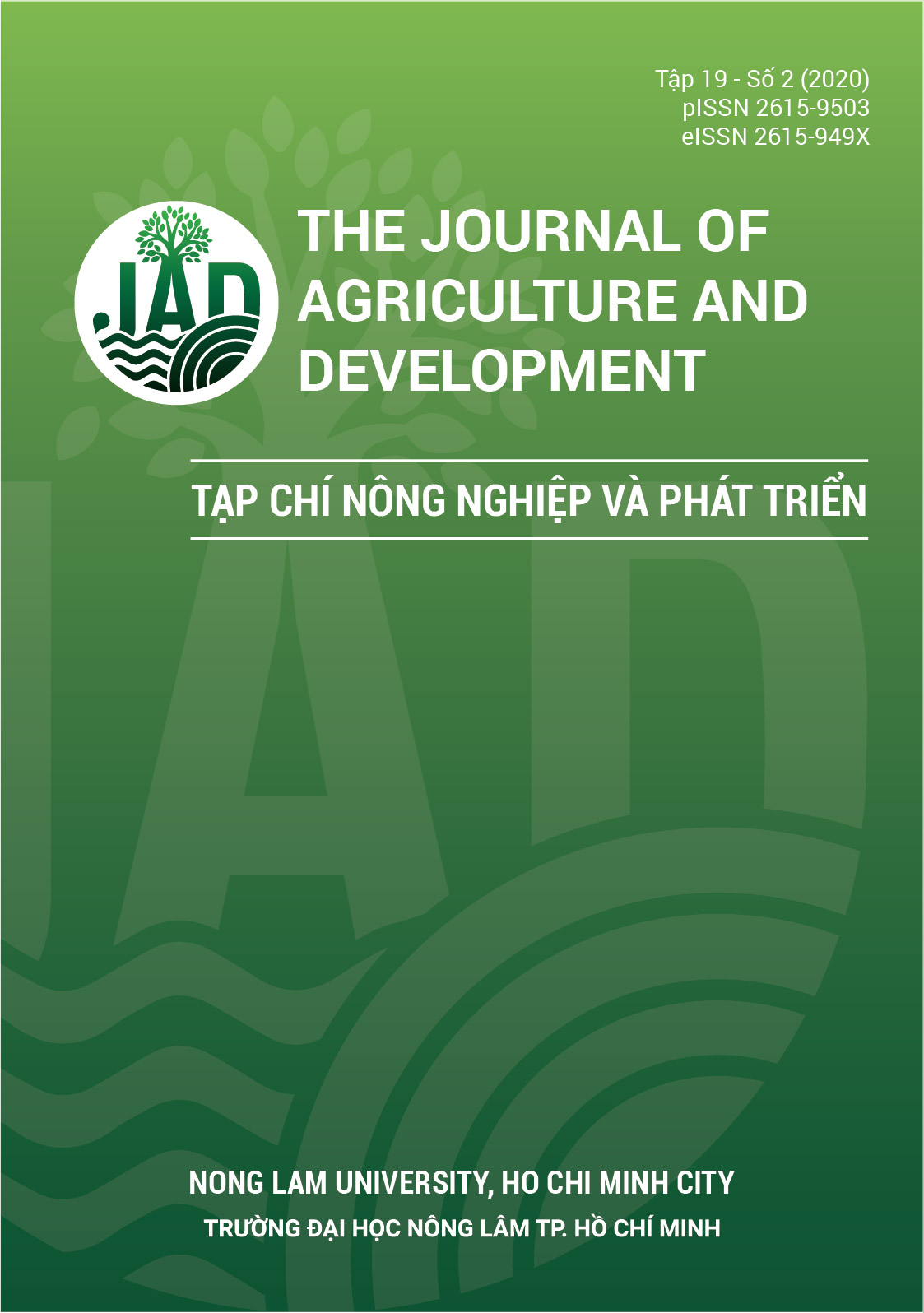Assessment of climate change adaptation capacity of agriculture in Ho Chi Minh City
Main Article Content
Abstract
This research used sociological survey method combined with Likert scale and the factor analysis method to assess adaptability to climate change from 4 factors including awareness of climate change, experience in responding to climate change, government support and access to resources. Based on the results of social survey of 10 districts related to agricultural activities in Ho Chi Minh City, the research calculated the score for 4 criteria and zoning for climate change adaptation value for each district. The results showed that high and average –resilient districts were Cu Chi, 9 and 12. Cu Chi was rated to have the highest adaptability, with an overall adaptability value of 0.86. Indeed, Cu Chi district was noted for having support from the government and access to the highest level of support among the 10 districts. Meanwhile, Binh Chanh, Go Vap and Thu Duc districts were located in a low adaptability area.
Article Details
References
ADB (Asean Development Bank). (2013). Vietnam: Environment and climate change assessment. Mandaluyong, Philippines: ADB.
ADB (Asean Development Bank). (2010). Ho Chi Minh City adaptation to climate change: summary report. Mandaluyong, Philippines: ADB.
Adger W. N. (1999). Social vulnerability to climate change and extremes in coastal Vietnam. World Development 27(2), 249-269. https://doi.org/10.1016/S0305-750X(98)00136-3
Balica, S. F., Wright, N. G., & van der Meulen, F. (2012). A flood vulnerability index for coastal cities and its use in assessing climate change impacts. Natural Hazards 64(1), 73-105. https://doi.org/10.1007/s11069-012-0234-1
Can, V. T., Nguyen, S. T., Tran, A. N., & Dang, K. D. (2013). Vulnerability assessment methods - Theory and practice. Part 2. Applying the calculation test for vulnerable indexes due to flood in Lam river basin - Nghe An province. VNU Journal of Science: Natural Sciences and Technology 29(2S), 223-232.
DONRE (Department of Natural Resources and Environment). (2010). Climate change adaptation and mitigation action plan report. Ho Chi Minh City, Vietnam: DONRE Office.
Downing, T. E., Butterfield, R., Cohen, S., Huq, S., Moss, R., Rahman, A., Sokona, Y., & Stephen, L. (2001). UNEP vulnerability indices: Climate change impacts and adaptation. UNEP policy series. Nairobi, Kenya: UNEP.
Fellmann, T. (2012). The assessment of climate changerelated vulnerability in the agricultural sector: reviewing conceptual frameworks. In Meybeck, S., Lankoski, J., Redfern, S., Azzu, N., & Gitz, V. (Eds.) Building resilience for adaptation to climate change in the agriculture sector (37-61). Rome, Italia: FAO and OECD. https://doi.org/10.13140/2.1.4314.8809
GSO (General Statistical Office). (2016). Vietnam population forecast 2014 - 2049. Ha Noi, Vietnam: Statistical Publisher.
Hair, J. F., Black, B., Babin, B., Anderson, R. E., & Tatham, R. L. (2006). Multivariate data analysis (6th ed.). London, UK: Pearson Prentice Hall.
IPCC (The Intergovernmental Panel on Climate Change). (2014). Climate change 2014: impacts, adaptation, and vulnerability. Part A: Global and sectoral aspects. Contribution of working group II to the fifth assessment report of the intergovernmental panel on climate change. New York, USA: Cambridge University Press.
Kumar, P., Geneletti, D., & Nagendra, H. (2016). Spatial assessment of climate change vulnerability at city scale: A study in Bangalore, India. Land Use Policy 58, 514-532. https://doi.org/10.1016/j.landusepol.2016.08.018
MONRE (Ministry of Natural Resources and Environment). (2016). Climate change and sea level rise scenarios for Viet Nam. Ha Noi, Vietnam: Vietnam Natural Resources and Environment Publishing House.
Saaty, T. L. (1988). What is the analytic hierarchy process? In Mitra, G. (Ed.). Mathematical models for decision support (109-121). Berlin, Germany: Springer.
Swanson, D., Hiley, J., Venema, H., & Grosshams, R. (2007). Indicators of adaptive capacity to climate change for agriculture in the Prairie region of Canada: An analysis based on statistics Canada’s census of agriculture. Working Paper for the Prairie Climate Resilience Project. Winnipeg, Manitoba: International Institute for Sustainable Development.
Tri, V. P. D., Trung, N. H., & Thanh, V. Q. (2013). Vulnerability to flood in the Vietnamese Mekong delta: Mapping and uncertainty assessment. Journal of Environmental Science and Engineering B(2), 229-237.
UNDP (United Nations Development Programme). (2006). Human development report 2006 beyond scarcity: Power, poverty and the global water crisis. New York, USA: Palgrave Macmillan.
Yamane, T. (1967). Statistics: An introductory analysis (2nd ed.). New York, USA: Harper & Row.








